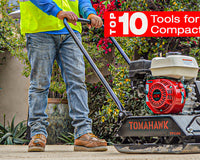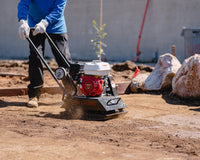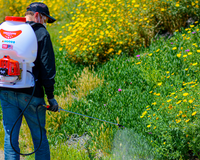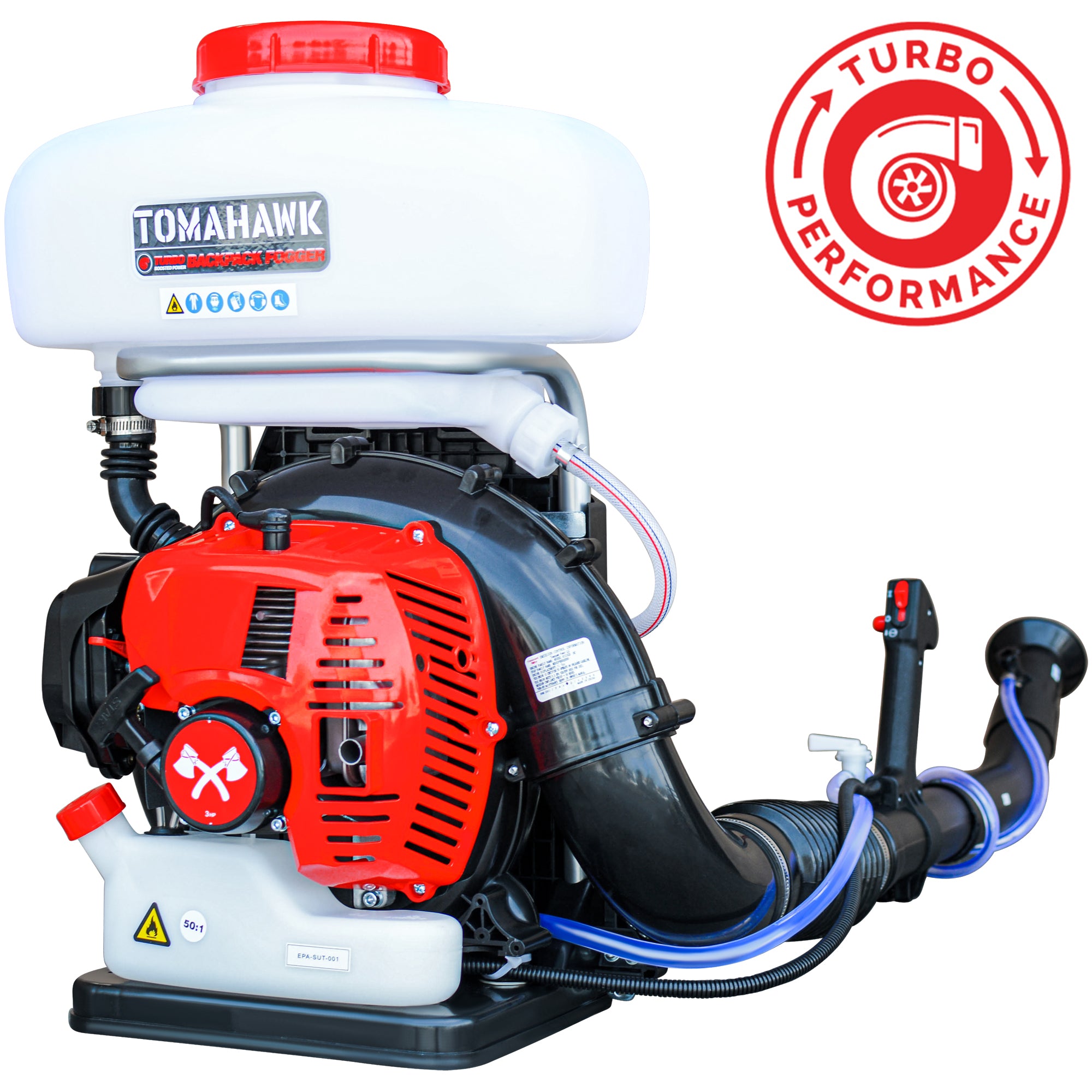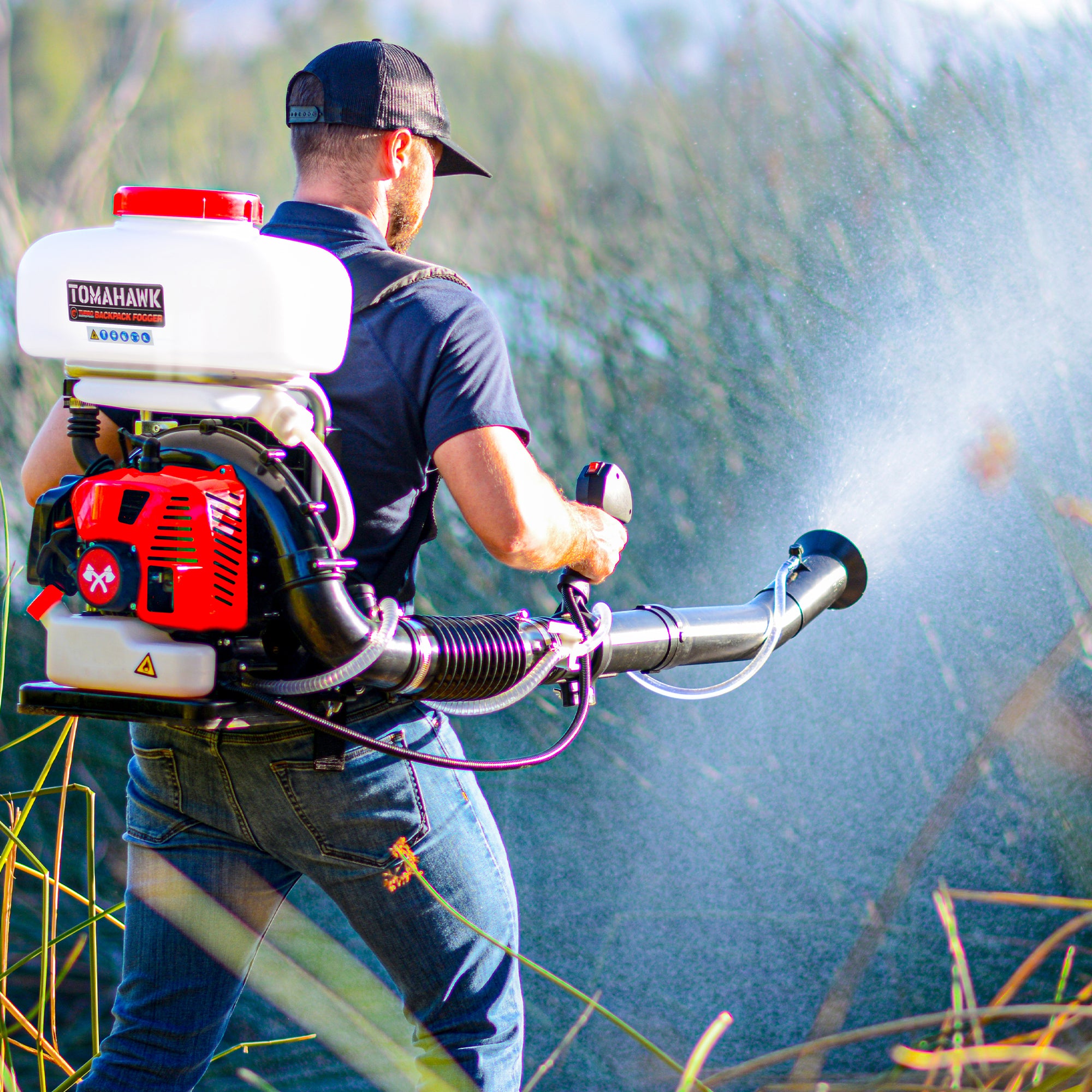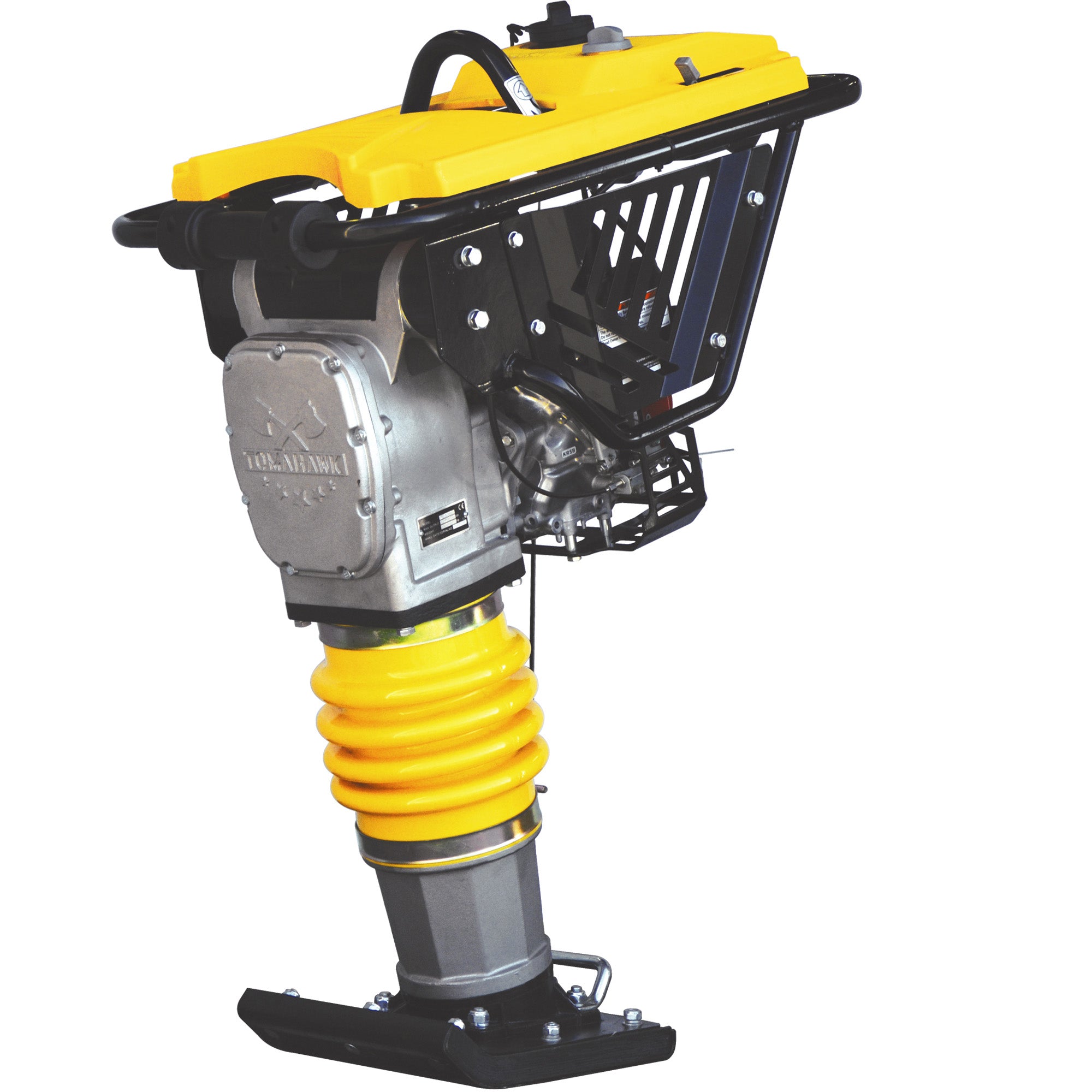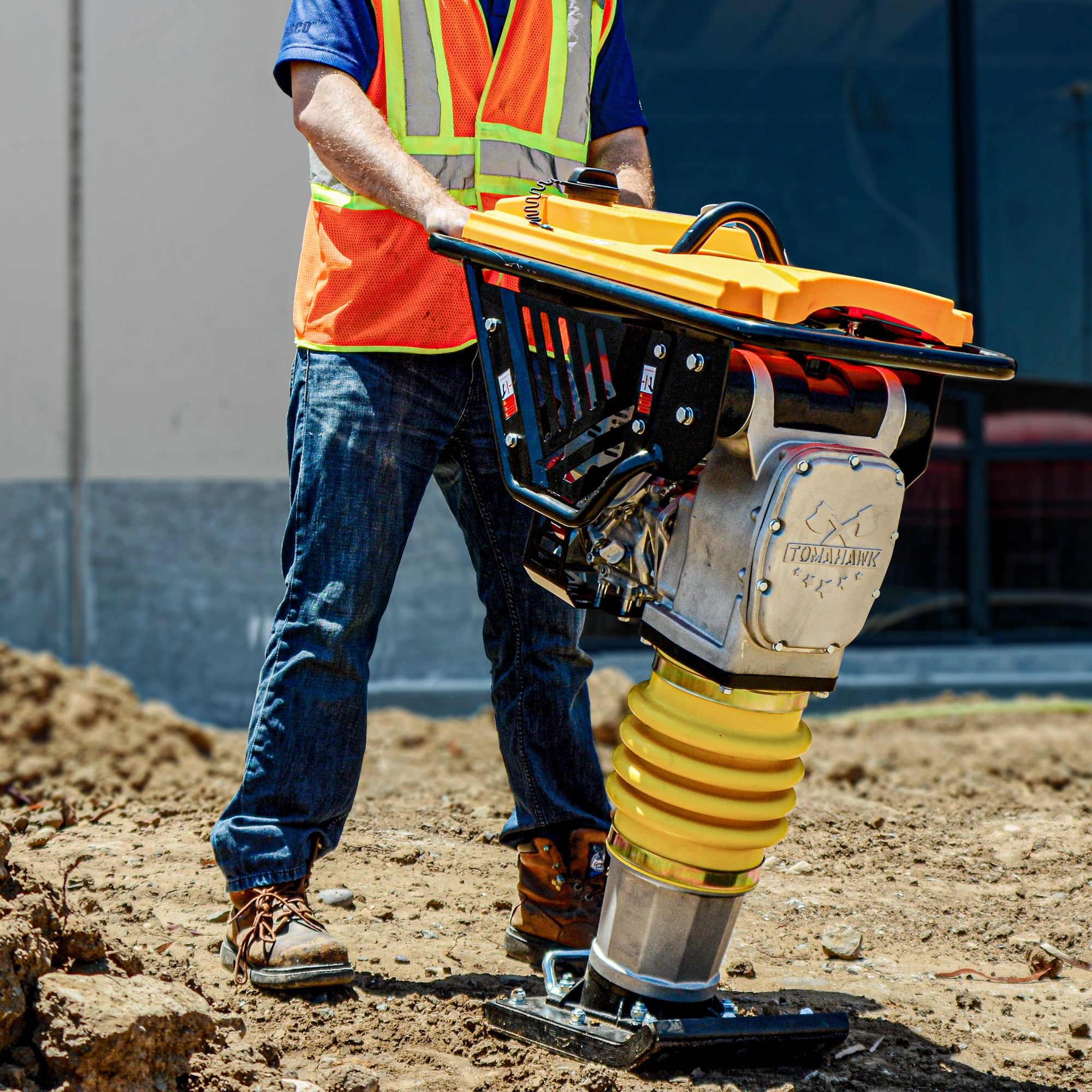Articles
Do You Really Need a Plate Compactor for Pavers? How to Compact a Base for Patio Success
One of the most overlooked yet critical steps in hardscaping is compacting base for patio foundations. Without proper compaction, the gravel or crushed stone under your pavers may shift or settle unevenly—causing dips, cracks, and unstable surfaces over time. This applies to patios, walkways, and driveways alike.
Essential Tools and Equipment for a Successful DIY Paver Patio
Taking on a patio build by yourself requires more than creativity—it requires preparation and the right gear. Choosing reliable tools for DIY paver patio projects is the difference between a professional-looking finish and uneven, shifting results.
How to Build a DIY Paver Patio with Fire Pit — No Contractor Required
Creating an inviting outdoor space doesn’t have to mean hiring professionals. With the right prep and tools, building a paver patio without contractor help is completely achievable. Whether you're adding a sitting area or dreaming of evenings around a fire, a paver patio with fire pit delivers warmth, comfort, and structure to your yard.
Common Flower Bed Wall Mistakes and How to Avoid Them
Building a garden wall may seem simple at first glance, but small errors can lead to major problems over time. From uneven blocks to poor drainage, many common DIY garden wall problems stem from skipping foundational steps. A flower bed wall isn’t just decoration—it’s a structural element meant to retain soil, resist pressure, and survive seasonal shifts.
How to Build a Raised Flower Bed Retaining Wall That Lasts
A raised flower bed offers visual appeal and planting advantages, but without the proper support, it won’t last. This is where the concept of a raised flower bed retaining wall becomes essential. It allows you to elevate your planting area while keeping soil, mulch, and moisture contained and well-drained.
How to Build a Retaining Wall for a Flower Bed on a Slope
When your garden has a slope, the question arises: should I build a flower bed on slope retaining wall? The answer is yes for both aesthetics and function. A slope wall prevents soil from washing away during rain, improves drainage, and creates level planting zones. These benefits make a garden slope fix essential if you want a polished, healthy outdoor space.
Should You Build a Wall Around Your Flower Bed? A Smart Look at Edging vs Retaining
How to Build a Beautiful Retaining Wall for Your Flower Bed: A Beginner’s Guide
Creating a raised flower bed with a retaining wall not only elevates your garden—literally—but also improves drainage, defines spaces, and prevents soil erosion. Whether you’re working with a sloped lawn or simply want to add structure to your landscape, knowing how to build retaining wall for flower bed gives you the freedom to shape your yard the way you want.
Essential Foundations: Gravel Base, Compaction & Tool Tips for Retaining Wall Success
Building a solid base is the first step when tackling any retaining wall. You might be asking: do you need gravel base? The answer is yes—gravel is essential for drainage and preventing pressure buildup behind your wall. Spread 4–6 inches of crushed gravel in the trench; this “base for retaining wall” serves as both foundation and drainage system. Without it, moisture can erode the soil or freeze and push the wall over time .
Affordable Ways to Build a Retaining Wall Without Breaking the Bank
Whether you're leveling a sloped yard or holding back soil near a garden bed, a retaining wall adds structure and style to your landscape. But professional installation costs can add up fast. Fortunately, there are several ways to build a retaining wall cheap without compromising on durability or aesthetics.
How to Prepare Your Yard Before Building a Retaining Wall
When it comes to hardscaping projects, retaining walls offer both beauty and function—but their strength starts long before any blocks are stacked. Proper preparation is key. Without solid groundwork, even a well-constructed wall can shift, lean, or fail completely. From evaluating drainage to compacting soil, the prep stage ensures your wall stands tall for years.
How Deep Should You Dig for a Retaining Wall? Base and Trenching Explained
Building a retaining wall starts well before the first block is laid—it begins at the trench. The strength, longevity, and overall success of your retaining wall largely depend on how well the base is prepared. Skipping or rushing through the trenching process can lead to tilting, cracking, or complete failure down the line. Fortunately, understanding the correct base depth and preparation can help ensure a stable wall that stands the test of time.
How to Build a Small Retaining Wall: A Clear Step-by-Step DIY Guide
Whether you’re enhancing your garden or managing slight slopes in your backyard, a small retaining wall offers a practical and aesthetic solution. While it may seem like a job for professionals, with the right planning and tools, you can complete this project yourself. The key is to understand each step, prepare carefully, and avoid common shortcuts that lead to structural failure over time.
Designing Smarter: How to Mix Wall Block Styles for the Perfect Retaining Wall
When it comes to landscaping and yard reinforcement, retaining walls do more than hold back soil—they contribute to the overall aesthetic and usability of your space. While many homeowners stick to one type of block, mixing wall block styles can offer both structural and visual advantages. Hybrid retaining walls are gaining popularity for their adaptability and contemporary design appeal. But to make the most of this trend, it’s essential to understand the technical considerations behind combining materials effectively.
Designing with Purpose: Exploring Retaining Wall Block Styles for Modern Landscapes
In modern landscaping, the retaining wall has evolved from a functional necessity to an architectural feature. Whether you're reshaping a sloped yard or adding dimension to your garden, selecting the right retaining wall design and material can transform your outdoor space. It's not just about strength—it’s also about style, sustainability, and how well your wall integrates with the rest of your yard.
Choosing the Right Wall Block for Sloped Landscapes and Loose Soil
Building a retaining wall on a slope isn't just about stacking blocks—it's about stability, drainage, and choosing the right materials for the soil and grade. With hillsides and loose earth, the structural integrity of your wall starts at the base and depends on the blocks you use. Whether you're designing a landscape feature or trying to manage erosion, selecting the best retaining wall block for slope conditions is essential.
Comparing Landscape Wall Materials: Which One is Right for Your Project?
Building a retaining wall is more than a structural necessity—it's a long-term investment in your property’s safety, appearance, and value. When selecting materials, homeowners are often overwhelmed by options like concrete, stone, wood, or block. Each material offers a unique blend of strength, appearance, cost, and longevity, so making the right choice requires an informed look at the pros and cons.
Which Block Is Best? Understanding the Types of Retaining Wall Blocks
When planning a retaining wall, one of the first choices you'll face is the type of block to use. Whether it's to improve your landscaping or support a slope, choosing the right material can make or break your project. Each type of retaining wall block comes with its own advantages, drawbacks, and aesthetic potential—knowing the difference helps you plan smarter and avoid costly repairs.
Terracing Slopes and Following the Rules: A Smart Start to Retaining Wall Projects
When working with sloped terrain, a retaining wall can solve both aesthetic and structural challenges. But before breaking ground, it’s crucial to understand the regulations and permits involved. Missteps in planning can lead to costly corrections—or worse, unstable structures. From zoning restrictions to how to terrace a slope safely, each decision you make shapes the longevity and legality of your wall.
Building a Level Trench on a Slope: A Foundation for Retaining Wall Success
Creating a level base for a retaining wall on a slope is one of the most critical and technically demanding steps of the entire wall-building process. Without precise leveling and trench planning, your wall risks slumping, shifting, or failing entirely over time. Whether you're building a short garden border or a structural wall to manage elevation, the success of your wall depends on the groundwork.
How to Build a Strong Retaining Wall That Lasts
Retaining walls are more than decorative—they’re structural systems that support tons of earth and water. Whether you're working with a backyard slope or installing a garden terrace, the long-term performance of a retaining wall depends on stability, compaction, and proper drainage. Unfortunately, many DIYers overlook these fundamentals, which leads to costly repairs or full-scale collapse.
Planning and Building a Retaining Wall on a Hill: What to Know Before You Start
Whether it’s to prevent erosion, manage elevation changes, or simply improve the look of your yard, building a retaining wall on a slope takes thoughtful planning. Sloped yards come with unique structural demands, and a poorly planned wall can lead to costly repairs or even collapse. With the right tools, strategy, and preparation, however, a sturdy and lasting solution is well within reach.
A Practical Guide to DIY Retaining Wall Projects
Creating a retaining wall on your property can enhance both function and aesthetics—especially for sloped yards or gardens prone to erosion. While hiring a contractor is one option, many homeowners take pride in building a wall themselves. With the right knowledge, tools, and timing, a DIY retaining wall can be a manageable and rewarding project.
Common Retaining Wall Mistakes to Avoid for Long-Term Stability
Building a retaining wall at home may seem like a straightforward landscaping project, but it’s one of those tasks where small errors can cause major structural problems. From poor drainage to wrong backfill materials, DIY retaining wall problems often arise not from lack of effort—but from lack of preparation. Before you dig in, it’s important to understand the key mistakes to avoid so your wall not only looks good but lasts.
What You Need to Build a Retaining Wall at Home
Every successful retaining wall starts with proper planning, the right materials, and most importantly—reliable equipment. For homeowners looking to take on their own landscaping project, knowing which tools to use can make the difference between a solid structure and one that fails over time. This guide breaks down the basics of what you’ll need, how to use it, and why your backyard deserves quality craftsmanship.
Simple Retaining Wall Steps for Beginners Without Experience
Building a retaining wall may seem intimidating, but with the right approach, even beginners can achieve solid results. A simple retaining wall DIY project starts with choosing an accessible location, selecting affordable materials, and understanding the basic steps of construction.
How to Avoid Costly Mistakes in Your DIY Retaining Wall Project
Learn how to prevent cheap retaining wall problems with expert tips. Avoid collapse and ensure durability with smart DIY strategies.
How to Avoid Costly Mistakes in Your DIY Retaining Wall Project
Building a retaining wall can be an excellent DIY project for landscape enhancement and erosion control. But when costs become the top priority, the risk of structural failure increases significantly. Cheap retaining wall problems often stem from poor planning, improper material selection, or lack of soil compaction. Each of these elements can lead to wall collapse, which not only ruins the structure but also poses safety hazards and requires expensive repairs.
How to Estimate the Cost of a DIY Retaining Wall: A Practical Guide for Budget-Conscious Builders
Retaining walls serve as more than landscape features—they’re essential structures that prevent erosion, manage slopes, and enhance outdoor spaces. But if you're considering building one yourself, understanding the full scope of expenses involved is critical for a smooth, successful project.
DIY Retaining Wall Tips: How to Build a Durable Wall on a Budget
Building a retaining wall isn’t just a weekend project—it’s a long-term investment in your yard’s stability and appearance. Whether you’re preventing erosion, creating garden beds, or managing sloped ground, the success of your DIY wall starts with a solid plan.


